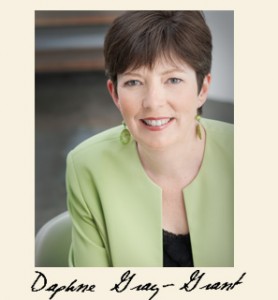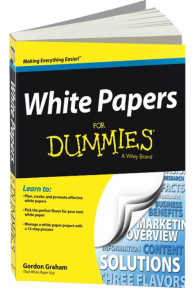During one of my commercial writing group-coaching series a few years back I had a candid email exchange with a participant about a question she’d submitted to be addressed in session. It was:
What can I do to stay motivated during those periods when my business-building efforts yield nothing?
She then analyzed her question—rather dispassionately, I’m proud to say, writing:
I now realize that first question was something a lazy person who gives up easily (my past life) would ask. I’m fascinated by how a lot of what you and your book say dovetails with what I’m reading in one of those books on how millionaires think.
It contains wealth principles like: “If you are willing to do only what’s easy, life will be hard. But if you are willing to do what’s hard, life will be easy.†I guess our comfort zones have to expand to include taking more risks.
I thought it was a very…adult realization. Seriously, we’re all lazy, but if you want a life unlike that of most people—perhaps have a successful commercial copywriting practice?—you’ll have to do things most people aren’t willing to do.
As I’m fond of reminding people, this path isn’t easy, so don’t expect it to be. And if they’ve never built a business before—much less a commercial freelancing business—then building a successful one will entail doing things they’ve never done before in their lives.
Let’s get real: this is the crux of success in most businesses, and certainly ours. We all have our thresholds—the points beyond which we just don’t/can’t (as yet) go.
If your comfort level demands that, you only, say, prospect for commercial writing work by bidding on online job sites, and only communicate with prospects and clients by email, unless you’re a prolific marketer, your income will likely be limited.
Simply put, the better-paying marketing copywriting work takes digging to find and land. And, as a rule, its greater complexity (relative to, say, articles), demands a greater involvement/discussion with clients—by phone, in in-person meetings, etc.
And let’s face it, all that opens us up to having our skills be judged by those paying us—especially if we’re being paid well.* All fertile ground for some pretty serious discomfort.
(*If you started out being paid peanuts—or perhaps are still there—it’s less intimidating, isn’t it? After all, how much can they expect for such low wages? But making more money raises the stakes, the stress, and hence, the discomfort. Interesting, no?)
Hey, I hate being uncomfortable as well, but when I started, I knew that success was going to require stepping out of my comfort zone in a big way, for a certain period of time. But here’s the key: the discomfort I felt was really quite fleeting.
And how can it be not be, when suddenly, you discover, for instance, that cold-calling isn’t that hard after all, that people are actually nice, and that—imagine!– some of them are actually interested? Not to mention that they’re all unfazed by your call, when you thought it was going to be some big uphill battle to explain yourself.
Some writers will move past their blocks, realizing the discomfort not only is never fatal, it’s both fleeting and finite as well. In most cases, you’re left wondering exactly what you were so afraid of in the first place. And, it’s not going to stretch for year after year—unless you’re doing it very part-time, and in fits and starts.
Have you expanded your comfort zones since you started? How so?
What sorts of things scared you to death early on, but are now second nature?
What advice would you give someone still held back by their comfort zones, from making a truly good living as a commercial writer?
Any other thoughts or comments on the subject?
Want to be a guest blogger on TWFW Blog? I welcome your contribution to the Well-Fed writing community! Check out the guidelines here.



